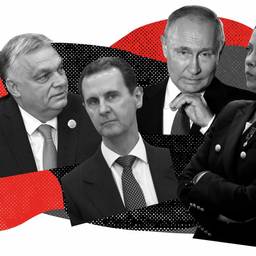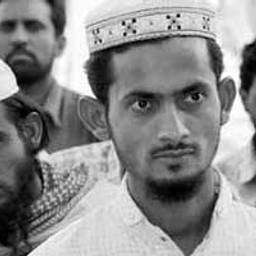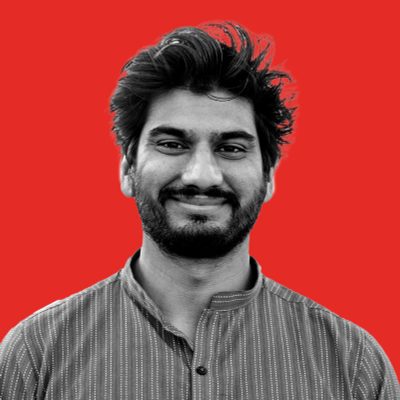Hindu Nationalists Are Taking Notes—and Tech Support—From the Israeli Right
The state of Assam has become a laboratory of ethnonationalism, with warning signs of genocide ahead.
Ankur Singh
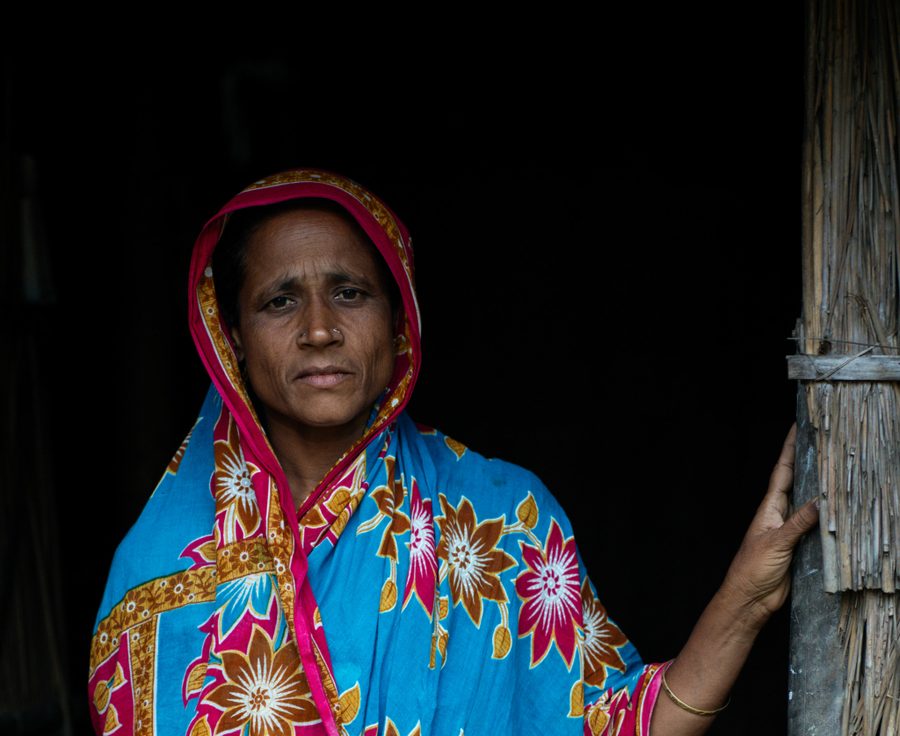
Momtaj Begum was scared, but there was no time. She immediately started packing everything her family owned — for herself, her husband and their three children.
At 11 o’clock one night in September 2021, thousands of residents of Dhalpur — a village on a sandbar in the Brahmaputra River in India’s northeastern state of Assam — received notice from the government that they must leave by 10 a.m. the next morning, when their homes would be demolished. State officials claimed the villagers, who lived half a day’s drive from India’s border with Bangladesh, were “illegal” immigrants encroaching on government-owned land, despite families having citizenship documents and living there for decades.
While Begum and her neighbors packed, Nur Hussain, a leader in the local All Assam Minority Students Union (AAMSU), messaged villagers frantically on WhatsApp, trying to make a plan. They weren’t going to leave so easily.
In the morning, hundreds of police officers arrived with bulldozers to evict nearly 1,000 Bengali Muslim families. Begum’s husband, Maynal Haque, a 28-year-old farmer, was still packing when a group of neighbors came by, en route to protest the evictions. Begum didn’t want him to go, but Haque pressed her to take his handful of rupees, then left to join the protest.
There, villagers tried to negotiate with the police, asking for more time, to no avail. Hussain returned home, but several thousand people remained. Then he heard the gunshots.
On social media, chaotic videos and photos spread of police firing on protesters. Hussain checked his phone and saw pictures of people who had been shot. According to a study by Assamese researchers, dozens of villagers were left injured or missing. Hussain’s neighbor, a newlywed bride, had been shot in her stomach. Begum’s husband’s bloodied clothes were found near the protest site, but Haque was nowhere to be seen.
Late that night, rumors circulated that two people had been killed, but nobody knew who, since police had taken the bodies. The next day they learned: One was a 12-year-old boy who’d been walking home from the post office. The other was Haque, whose body police returned to where his and Begum’s home once stood.
Today, the land where the villagers lived is a government farming program to employ Assamese speakers — the majority of whom are Hindu. One nearby school was turned into a Hindu temple. A local mosque was converted into housing.
It wasn’t the first time that a state led by the Bharatiya Janata Party (BJP) — the far-right Hindu nationalist party of Indian Prime Minister Narendra Modi — has targeted Muslim communities with what local activists call “bulldozer justice.” Since 2020, similar BJP “anti-encroachment drives” have been carried out in four other Indian states and Delhi. A February report by Amnesty International concludes that evictions used to target Muslim-owned properties have “become a de facto state policy,” “hailed and celebrated” by the BJP.

Over the same period, bulldozers have become a potent symbol of Hindu nationalism. BJP rallies feature bulldozer imagery, bulldozer-themed pop songs, even pictures of bulldozers on snack packaging. In 2022, an Indian Independence Day parade in New Jersey featured a wheel loader decorated with pictures of Modi and one of his key supporters, Uttar Pradesh Chief Minister Yogi Adityanath, nicknamed “Bulldozer Baba” for his aggressive eviction campaigns. Shortly after a 2022 eviction drive in New Delhi, a BJP member of Parliament tweeted a taunt: that JCB, the UK-based heavy equipment manufacturer whose bulldozers have been used in evictions across India, is short for “Jihad Control Board.”
After Begum’s husband was killed in Dhalpur, she was told police had even used a JCB bulldozer to move his body.
If this imagery seems reminiscent of Israel’s dynamics with Palestine, it should. In 2020 and 2021, roughly 120 Palestinian homes and other structures in the West Bank village of Khirbet Humsah were demolished to make room for Israeli settlements — plowed down by the same bright yellow JCB bulldozers that leveled Begum’s home. Multiple human rights groups have accused JCB of failing to prevent its machinery from being used in human rights violations in Israel/Palestine and India.
But the similarities go far beyond that.
The two countries are led by kindred ethnonationalist ideologies — Zionism, today dedicated to creating an explicitly Jewish state in Israel, and Hindutva, which seeks to build an exclusively Hindu nation in India. They also share a parallel history dating back to the end of British colonialism, when the British Empire shaped the initial borders of both countries upon their founding — India in 1947, Israel in 1948 — causing the violent partition of land along ethnic and religious lines and collectively displacing millions. For nearly a century, concerted efforts have been made to model Hindutva on Zionism, with deliberate alliances made. Today, the countries are among each other’s closest allies, with numerous trade agreements, shared weaponry and technology for border enforcement and a common ideology of state-sponsored violence against marginalized parts of their populations.
And as the world focuses on Israel’s genocide in Gaza, where more than 33,000 Palestinians have been killed since October 7, another genocidal process is underway, in early stages, in India.
Genocide follows a familiar pattern, with stages that progress along a continuum. In 2018 and 2019, Assam’s repression of Muslims prompted the international group Genocide Watch to issue reports that India was showing early signs of genocide. That assessment was escalated to a “genocide warning” in 2020, noting that India was now in the “persecution” stage — the last step before “extermination.”
But genocide and ethnonationalism are not identical from country to country — or, in a nation as large as India, even from state to state. In Kashmir, a Muslim-majority territory that came under Modi’s near-totalitarian control in 2019, Indian ethnonationalism bears similarities to Israel’s occupation and settlement in the West Bank, with a senior Indian diplomat lauding their occupation as an opportunity to follow Israel’s “model” by resettling Hindus in Kashmir.
In Assam — a diverse state whose citizens represent dozens of ethnicities, tribes and religions — ethnonationalism instead looks like evictions, border militarization and stripping Muslim Indians of citizenship under baseless claims that they are actually undocumented Bangladeshi immigrants. The latter effort is carried out by a Kafkaesque court system that has rendered more than 150,000 people stateless, with an unknown number in detention centers. Another 1.9 million people in Assam — most Bengali Muslims, an ethnic minority culturally and linguistically similar to Bangladeshis — were left off a National Register of Citizens and potentially face the same fate.
When Genocide Watch issued its initial 2018 warning, it noted that what was happening in Assam bore a “shocking” resemblance to the ethnic cleansing campaign Myanmar was waging against its own Muslim minority, the Rohingya. The roots of that genocide began when Myanmar declared the Rohingya noncitizens in the 1980s. Likewise, Genocide Watch recently noted, the genocide currently unfolding in Gaza was preceded by decades of systematic exclusion of Palestinians from equal access to citizenship.
While Assam is currently the only state creating a list of alleged noncitizens, Modi’s government has indicated a desire to replicate it nationwide, further endangering India’s nearly 200 million Muslims. Meanwhile, another recent law eases the path to citizenship for certain refugees — as long as they aren’t Muslim.
With national elections beginning in April that will determine whether Modi and the BJP get another five years to push their agenda, much is at stake. Already this month, a state legislator from one of Assam’s border districts reportedly threatened that people who don’t vote BJP should expect a JCB bulldozer at their home. (The BJP legislator subsequently claimed the video of his comments was fake.) Just this past weekend, Modi declared at an election rally that if the opposition party took power, Muslim “infiltrators” would take India’s wealth.
“Hindu nationalists have been observing how Israel has been behaving,” says journalist Azad Essa, author of the 2023 book Hostile Homelands: The New Alliance Between India and Israel. “More importantly, they’re watching how the world is responding to it. They’re noticing that if you have the Great America behind you, no one really can touch you.” While Dhalpur residents saw their homes destroyed, Modi was in Washington to meet with President Biden, to reaffirm a “close and enduring partnership.”
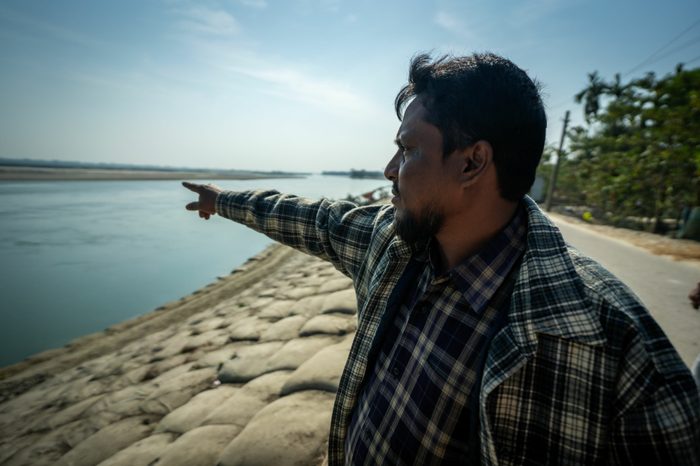
In many ways, life in Assam revolves around the Brahmaputra River and its numerous tributaries. Originating in the Himalayas, the river flows through Tibet and China before cutting across India and Bangladesh and ultimately emptying into the Bay of Bengal. As it flows, the river acts as a conveyor belt, carrying billions of tons of sediment from the Himalayas to the sea, making and remaking the countless “chars” — sandbar islands — that dot the Brahmaputra and are home to 2.4 million people, predominantly Bengali Muslims who farm the fertile land.
But these days, the Brahmaputra also serves as a rough map of India’s transformation from the secular multiethnic democracy it was founded as to a Hindu nationalist state. Follow the river some 200 miles west from Dhalpur, past bright yellow corn and mustard fields and homes made of jute, and you’ll reach Barpeta, where 70% of the population are Muslims, many recently stripped of their citizenship. Across the river sits Matia Detention Camp, which became India’s first formal immigration detention center in 2023, where many Indian citizens accused of being foreigners end up.
Further west in Dhubri, the Brahmaputra ceases to be just a river and becomes a 38-mile unfenced international border between India and Bangladesh. India’s Border Security Force (BSF), the largest border agency worldwide, has long struggled to maintain fencing along the river thanks to frequent flooding, now exacerbated by climate change. So in Dhubri, they’ve begun piloting the use of Israeli drone and underwater camera technology. It’s par for the course in a state that’s become one of India’s chief experimental laboratories for Hindu nationalist policies.
India’s homegrown version of ethnonationalism first emerged in the early 1920s, during the waning years of British rule. After being imprisoned by the British, Indian activist V.D. Savarkar coined the term Hindutva to describe another nationalist movement — distinct from that led by Mohandas Gandhi — that believed a future independent Indian state should also be a Hindu one. At the time, Hindu nationalists were inspired by nascent fascist movements in Europe, particularly Italy, where some traveled to learn Mussolini’s methods and apply them at home. Hindu nationalists also took inspiration from emerging strains of Zionism that eventually led to the establishment of a Jewish state in what had been British-governed Palestine.
“If the Zionists’ dreams are ever realized — if Palestine becomes a Jewish state — it will gladden us almost as much as our Jewish friends,” Savarkar wrote in the 1920s.
But when Israel did become a modern nation-state in 1948— after its own violent partition that redrew borders and expelled nearly 750,000 Palestinians from their homes — India was not an immediate ally. The year prior, during a United Nations General Assembly meeting, India voted alongside most of the Arab world in opposing Palestine’s partition, objecting to borders drawn along religious lines. Decades later, India became one of the first non-Arab countries to recognize Palestine in 1988 — four years before it established formal diplomacy with Israel. But India’s relationship with Israel has deepened dramatically since then.
Over the same decades, Hindutva institutionalized. The Rashtriya Swayamsevak Sangh, a right-wing paramilitary group, became Hindutva’s main proponent. It now oversees a network of dozens of national organizations and thousands of local affiliates, from schools and religious groups to labor unions, cultural clubs and its political arm, the BJP.
As the movement grew, it became increasingly violent. In 1992, Hindu nationalists destroyed a 16th-century mosque known as Babri Masjid in the Uttar Pradesh town of Ayodhya, claiming it was built on the birthplace of the Hindu god Ram. Ten years later, after a train carrying mostly Hindu pilgrims returning from Ayodhya caught fire in the state of Gujarat, killing 59 people, Gujarat’s then-chief minister — Narendra Modi— claimed the fire was an act of intentional terrorism. Vicious riots broke out, arguably stoked by the BJP, that killed as many as 2,000 people and displaced another 150,000 – 200,000, most of them Muslim.
In 2014, that legacy helped make Modi prime minister, marking the first time that Hindu nationalists won a majority in government. Immediately, anti-Muslim initiatives spread across India, with many states criminalizing the possession or consumption of beef. (In 2015, a man was lynched by a Hindu mob for eating beef in public.) Increased censorship of journalists, academics and artists followed, and the state sanctioned the destruction of multiple mosques. Hate crimes increased by 786%, most targeting Muslims.
When Modi was reelected in 2019, things got worse. Within months, his government revoked Article 370, which had granted partial autonomy to Kashmir, opening the region to outside investment and settlers. Tens of thousands of troops deployed to the region, instituting a full communications blackout and detaining hundreds of local leaders. The same year, the government passed the Citizenship Amendment Act (CAA), fast-tracking citizenship for refugees facing religious persecution in neighboring countries, but explicitly excluding Muslims — sparking protests across the country that were met with brutal police crackdowns. Periods of intense ethnic violence have followed, killing hundreds in multiple states.
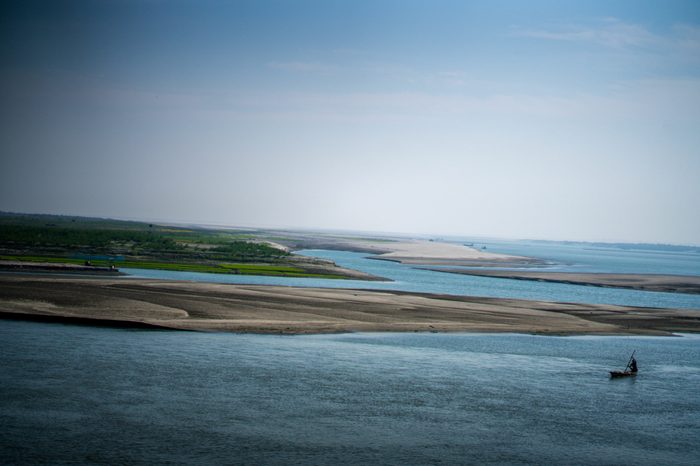
India established diplomatic ties with Israel in 1992. Shortly before that happened, India received some blunt advice, according to Indian Marxist historian Vijay Prashad, whose 2003 book Namaste Sharon: Hindutva and Sharonism Under U.S. Hegemony recounts the history of India-Israel relations. As numerous members of India’s External Affairs Ministry recalled to Prashad, when India sought to enter the global market and receive international loans, “The Americans told the Indians very clearly, ‘If you want to come to D.C., you have to go through Tel Aviv.’”
But Modi’s election also marked a new era of alliance with Israel. When Modi first met Israeli Prime Minister Benjamin Netanyahu, at the 2014 UN General Assembly, both committed to strengthening ties. As Azad Essa observed in Hostile Homelands, the leaders “immediately recognized in each other the single-minded determination to build states with a single culture, a single race and a single nation.”
In 2017, Modi became the first Indian prime minister to travel to Israel, where he and Netanyahu were photographed walking on a beach together. Modi remarked that his visit “reminds us of the deep and centuries-old connect[ion] between our societies” — an apparent reference to past Jewish immigration to India and historical trade ties between Jews and Hindus.
A more concrete result of the meeting was a $2 billion defense contract between the two countries — then the largest contract in the history of the Israeli defense industry. Its centerpieces were a missile defense system and a spyware surveillance program called Pegasus. Several years later, in 2021, Amnesty International and journalism nonprofit Forbidden Stories reported the Modi government used Pegasus to spy on a wide array of targets, including opposition politicians, journalists, foundations, business executives and foreign diplomats.
Delegations between the two countries have since become commonplace. Indian politicians, BSF officials, Army chiefs and other defense leaders have all undertaken official tours of Israel. Israeli counterparts have visited India in turn, including former Israeli President Reuven Rivlin in 2016, Netanyahu in 2018, and Speaker of Parliament Amir Ohana and Foreign Minister Eli Cohen in 2023. Yoram Hazony — a prominent Israeli political theorist who founded the international National Conservatism movement, which advocates for Israeli-style religious nationalism as a model for the global Right — visited in July 2023, meeting with academics, business executives and members of the BJP.
As in 2017, many official visits have been followed by major trade deals. In Modi’s first term, he increased arms imports from Israel by 175%, citing the need for defense against Pakistan and China. Today, India is Israel’s largest arms purchaser, accounting for 42% of all Israeli arms exports.
Israel’s role as a major weapons exporter is no surprise. Its military occupation of Palestinian territories made Israel a global defense industry leader, with more than 100 defense companies and defense exports that reached an all-time high of $12.5 billion in 2022. “The centrality of Israeli arms to the country’s economic survival is impossible to overestimate,” writes journalist Antony Loewenstein in his book The Palestine Laboratory, which documents how Israel exports weapons tested in the occupied territories across the globe. But it’s not only weapons.
“What they’ve done is they put a Homeland Security application on a lot of their military hardware, and then they try to sell it around the world,” says journalist Todd Miller, whose 2019 book Empire of Borders notes that Israel also has the highest concentration per capita of surveillance companies in the world, inspiring and equipping border enforcement globally. Israeli defense company Elbit Systems, for example, built many of the surveillance towers used on the U.S.-Mexico border.
“Countries buy weapons and surveillance technologies from Israel mainly because Israel does not place restrictions on their use and does not intervene in their human rights violations,” explains Israeli human rights lawyer Eitay Mack. “Therefore, Israel also sells weapons and surveillance technologies to regimes that other Western countries do not sell to, such as Myanmar and Azerbaijan.”
After the October 7 attack on southern Israel by Hamas, which killed roughly 1,200 people, India emerged as a prime defender of Israel, even as much of the rest of the world quickly grew alarmed by the scale of Israel’s response. In October, a fact-checking company found that 20% of posts on X (formerly Twitter) that used the hashtags #IsraelUnderAttack and #IStandWithIsrael were from India-based accounts. Indian social media accounts also became amplifiers of disinformation about the war on Gaza. And after Israel canceled hundreds of thousands of Palestinian work permits, the country requested that India send 10,000 workers to replace them, and immediately began recruiting.
Meanwhile, arms deals continue. In November, Elbit Systems sold the Indian military four Hermes 900 armed drones — which are also currently being used to bombard Gaza. In February, India became the first country outside Israel licensed to manufacture Elbit’s drones, and it soon shipped 20 of them back to Israel.
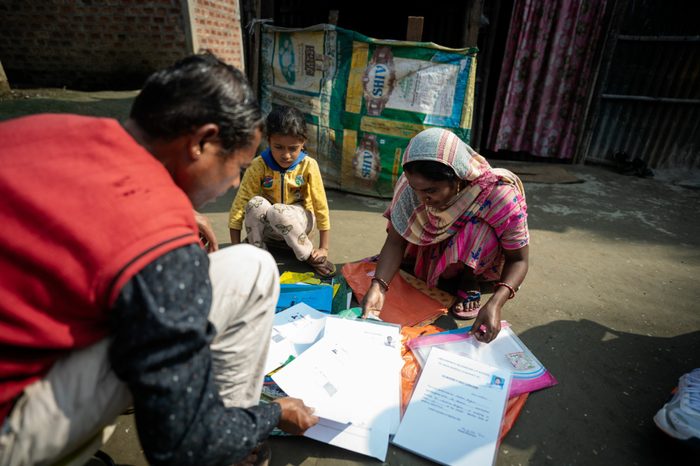
Much as Palestine has been used as a laboratory for Israeli weapons and border technology sold across the world, Assam has become the primary testing ground for Hindu nationalist policies expanding across India.
Anti-immigrant sentiment has been prevalent in Assam since colonialism, when the British recruited farmers from Bengal, sparking the region’s first major migration. After the 1947 Partition of India and Pakistan, tens of millions migrated across the subcontinent. In 1971, as Bengalis in present-day Bangladesh fought for independence from Pakistan, millions more sought refuge in India. After each wave, many in Assam — from caste Hindus to ethnic Muslims to numerous indigenous tribes — felt they were losing jobs, culture and language to the new migrants.
In the late 1970s, those resentments birthed the anti-immigrant Assam Movement, which demanded the government deport undocumented immigrants. The movement’s widespread campaigns of civil disobedience and political violence — culminating in the massacre of thousands of Bengali Muslims in 1983 — helped lead to the signing of the 1985 Assam Accord, which created government mechanisms to oust suspected foreigners and seal the border with Bangladesh.
Militarization of that border has increased dramatically since then. Where, in the 1990s, border fences had just a single layer of barbed wire, today there are three layers of sandwiched fencing. BSF agents with AK47s strapped to their backs bicycle down border roads too narrow for cars. A border outpost stands roughly every two miles, a BSF camp every three.
In the past five years, Assam launched a pilot program for even more draconian border enforcement — including sensors, radar and more — known as the Comprehensive Integrated Border Management System (CIBMS). Inspired by Israel’s border with Gaza, it’s being tested along sections of India’s borders with Pakistan and Bangladesh. In Assam, the system was launched in Dhubri in 2019, with a government press release boasting, “the entire span of River Brahmaputra has been covered with data network generated by Microwave communication, OFC Cables, DMR Communication, day and night surveillance Cameras and intrusion detection system.”
The BSF did not respond to multiple requests for comment.
Despite much local fanfare about the Israeli technology, implementation of the system has been rocky. According to local journalist Mehtab Uddin Ahmed, who attended a Dhubri demonstration of Israeli tethered drones and 360-degree cameras in 2019, the equipment is currently damaged and not in use. An internal 2021 audit of the system obtained by the New Indian Express called it a “failed project.”
But CIBMS isn’t the only Israeli tech being deployed in Assam. In 2021, Corsight AI, headquartered in Tel Aviv, announced a partnership with Assam state agency AMTRON, “to provide Facial Recognition services, capacity development, research and skilling services,” as well as creating a “Facial Recognition Center of Excellence” in Guwahati, Assam’s largest city. Corsight technology is currently being used in Gaza for mass surveillance of Palestinians, often targeting civilians who are later detained.
Their work in Israel may foreshadow what Assam residents can expect. But already, these early experimental efforts are helping create an atmosphere that’s hard to ignore.
When I traveled to Assam’s border areas in December, I felt a constant sense of being watched. A shop owner in Karimganj said he might have to relay my presence to the BSF since they’d asked him to report anyone not from the area. In Dhubri, a hotel receptionist said I had to submit a copy of my passport to police before I could check in. It seemed nearly everyone had been deputized to be on the lookout for foreigners — whether or not they were there.
For decades, Indian politicians have hyped fears of an overwhelming Bangladeshi immigration crisis. In 2005, Assam’s governor claimed 6,000 Bangladeshis were crossing the border daily. In 2018, former BJP President Amit Shah claimed India had 4 million undocumented immigrants nationwide— while referring to Bangladeshis as “termites.” In 2022, former BJP spokesperson Ashwini Upadhyay escalated that figure dramatically, claiming there were 50 million.
Despite these claims, recent BSF data reports that only 5,492 people were apprehended at the India-Bangladesh border in all of 2023. Anecdotally, no one I spoke with in Assam had seen the swarms of migrants the Hindu Right is fortifying the border against.
“There are no Bangladeshis here,” said Abdel Hai, a local Dhubri farmer who also volunteers with his local Village Defense Party, which patrols the area. Hai says he’s never encountered an undocumented Bangladeshi who has settled in his village — only a handful of smugglers, often youth trying to make quick money in an economically distressed region by transporting cattle and medicine. “We’re all Indians and we’re from here,” Hai said. “We were born here.”
It was as if the Indian government had armed the BSF for war against a nonexistent foreign enemy. Then, in lieu of a real invasion, it turned on its own citizens instead.

Imagine if, in an effort to identify undocumented Mexican immigrants, the United States required every Arizona resident to prove their ancestors had lived there since at least 1821, when Mexico became an independent country. Now imagine if those unable to do so were declared foreigners, locked in detention centers and stripped of their citizenship. That’s what’s happening in Assam.
In addition to sealing the border to prevent new immigration, the 1985 Assam Accord sought to detect and deport migrants already present in the state, by sending them to “foreigners tribunals”: quasi-judicial bodies that decide whether a person is an undocumented immigrant through what Amnesty International has called “bias[ed], prejudice[d] and arbitrary decision making.” First established in 1964, but expanded dramatically after 1985, there are currently 100 such tribunals throughout Assam, although the BJP-run state government has called for tripling that number.
People end up before the tribunals if they’re referred by either India’s Border Police or its Election Commission, which maintains a list of eligible or “doubtful” voters. In theory, those accused can prove their citizenship by providing documents that attest their ancestors have been present in India since before March 24, 1971, two days before Bangladesh gained independence, and that prove their relationship to those ancestors.
But Zakir Hussain, an attorney who has represented roughly 100 clients facing citizenship challenges, says that genuine Indian citizens often struggle to meet these demands. Women who changed their names after marriage have difficulty proving family relationships; misspellings or inconsistencies on documents are common; historically, many Indians were not issued birth certificates; and those who moved or were displaced by flooding — an increasingly pressing concern — struggle to prove they’re the person their documents claim. And of course, many can’t afford lawyers to navigate the process.
Those who fail to convince the tribunals find themselves in limbo. Bangladesh won’t take them (because they’re not Bangladeshi citizens), while India no longer recognizes their citizenship. Many end up in detention centers, sometimes for years. Those released on bail return home, but without the right to vote or access public benefits, and unsure whether they’ll be detained again.
I spoke to nearly a dozen Indian citizens in Assam who were swept up by the tribunals.
There was Minara Begum, who was declared an undocumented Bangladeshi by a tribunal in 2009, despite her family having resided in the same village for seven generations — before the borders of India and Bangladesh existed. When her daughter was just a month old, border police took Begum into detention. Begum pleaded to keep her newborn; little did she know it would be 10 years before they were released, and her daughter would grow up not knowing there was a world outside.
There was Aklima Bewa, a domestic worker from Dhubri. In 2022, border police arrived at her employer’s home to serve her notice to appear at a tribunal. When she was handed the notice, Bewa fainted. Her case is ongoing.
Then there’s Mamiran Nessa, a 52-year-old Bengali Muslim woman who lives on a char in the Brahmaputra. In 2009, after Nessa returned from tending her family’s livestock, a neighbor’s child told her that police had come by with a tribunal summons. She had previously been accused of being an undocumented Bangladeshi immigrant, despite having documents showing her grandfather and father were registered Indian voters well before 1971. Unable to afford a lawyer, Nessa had struggled to make her case, and was detained for a decade.
Nessa was pregnant and nursing when she was detained. She alleges police beat her and that shortly thereafter, she miscarried. Six months before her release, Nessa’s husband died.
“What could I even do?” Nessa said. “I didn’t eat. I cried and shouted.”
Stories like these abound. But the 150,000 people already rendered stateless since 1985 aren’t enough for the BJP. In 2013, the Supreme Court ordered Assam to launch a parallel process of identifying supposed foreigners: the National Register of Citizens. Rather than accusing specific individuals, every resident of the state was considered suspect, with all 31 million required to submit documents proving their family lineage.
When Assam’s government published a final draft of the list of verified citizens in 2019, 1.9 million Assamese residents were left off without explanation, immediately placed at risk of becoming stateless.
Mohammad Azmal Hoque, a retired Army officer who was excluded from the registry, described the process as confoundingly arbitrary: a government bureaucrat at a desk, deciding who is or isn’t a foreigner at whim, with “no evidence, no witnesses, no investigation” — an echo of the colonial past, when bureaucrats drew borders on maps with no regard for their impact.
The list’s publication outraged stakeholders across the political spectrum, including targeted Bengali Muslims, but also many Hindu nationalists, who argued that the list excluded too few people from citizenship while having also cast doubt on too many Hindus. An array of right-wing organizations, including civil society groups, the All Assam Students Union and the BJP, announced they would file lawsuits with India’s Supreme Court, seeking to “reverify” the list. Until that verdict, the BJP’s plans to build an additional 200 tribunals and 10 detention centers are on pause.
Regardless, the BJP has signaled its intent to replicate the registry nationwide. In 2019, BJP leader Amit Shah proposed as much, but backtracked after widespread protest. This year, in the lead-up to April’s elections, BJP officials in multiple states have campaigned on instituting similar state-level registries.
“The bottom line is that Indian citizens are accused of being illegal migrants,” explains Aman Wadud, an Assam-based human rights attorney who says that, after a decade of representing “suspected foreigners,” he hasn’t encountered a single actual migrant. “They’re not undocumented, they’re not irregular migrants. They’re Indian citizens — just their citizenship has been taken away.”
“Two, three, four years ago, I thought that a Rohingya-like situation will not happen,” Wadud continued. “Now, I hope and pray that it doesn’t.”
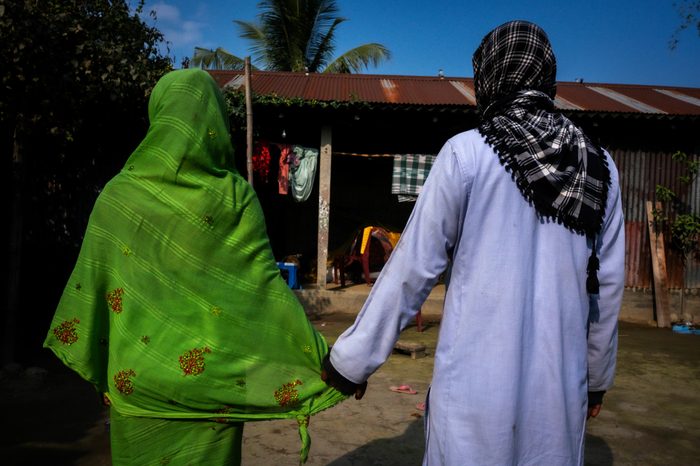
As I waited on the river bank in Barpeta for Mamiran Nessa’s teenage son, the Brahmaputra was full of life: Men attended to shops in a bustling marketplace, mothers bathed their children in the shallows and produce trucks parted the water as they drove between the bank and nearby sandbars, loaded with mustard and jute.
Nessa’s son arrived in a wooden rowboat to ferry me and Iftikar Hussain Siddique — a paralegal who helped free Nessa from detention — across the river to the tiny char where they lived. Called Takakata, the sandbar is about four miles long by three miles wide, dotted with wild peanuts, a soccer field with bamboo goal posts and children burying each other in straw. Roughly 200 Bengali Muslims live on Takakata — for now. But they face a constant threat of displacement from rising waters and rising Hindu nationalism: threats so interconnected in Assam that it’s hard to tell where one stops and the other begins.
As climate change accelerates snowmelt in the Himalayas, more catastrophic flooding follows along the Brahmaputra. Each monsoon season now pushes thousands into relief camps, causes food shortages and kills hundreds. Some chars — predominantly inhabited by Bengali Muslims — are washed away entirely. Government figures estimate nearly 427,000 hectares of land in Assam have eroded since 1950. Yet, in what some see as a deliberate omission, Assam’s government doesn’t provide documents proving a person once owned land that is now underwater. In a region where documents are vital to proving one’s citizenship, the worsening floods represent another path to statelessness.
“After erosion where do people go? They move,” said Siddique, who contends that Assam’s purported immigration crisis isn’t about an influx of Bangladeshi border crossers, but Bengalis internally displaced by flooding.
“Flood, then erosion, then eviction, then notice, then [foreigners tribunal] case, then detention camp,” said Nanda Ghosh, the Assam state coordinator for Citizens for Justice and Peace. “This is the chronology.”
When Genocide Watch issued its warnings about Assam, it has cited examples throughout history of countries rendering minority populations stateless before launching violent ethnic cleansing campaigns, from the Rohingya in Myanmar to Jews during the Holocaust.
Yet nowhere is the issue of statelessness more potent than in Israel/Palestine. Israeli citizenship is awarded to almost all who can prove Jewish ancestry, regardless of where they were born. Meanwhile, Palestinians who can trace their heritage to the land for generations have overwhelmingly been denied citizenship since 1948. Without citizenship, most Palestinians are subjected to an apartheid system enforced through occupation, eviction, detention and barriers to movement — tactics becoming increasingly common in India as well.
“We have accepted the idea of ‘ethnic homeland,’ that is why conflicts arise,” says Parvin Sultana, a professor in Dhubri. “Because then we don’t want to share our space with another ethnic community.”
“When you have ethnonationalism in conjunction with the prospect and expansion of statelessness, then you’re talking about a potent cocktail,” says Azad Essa. “That leads to dehumanization, and that leads directly to ethnic cleansing and genocide.”
With India’s election just weeks away, the rhetoric of exclusion and dehumanization is in high gear.
In December, Assam Chief Minister Himanta Biswa Sarma urged people in the state to not sell land to “suspected foreigners” — meaning Bengali Muslims. In January, millions celebrated the opening of a new Ram temple built on the remains of the Babri Masjid, the mosque Hindu nationalists demolished in 1992. And in early March, at the start of Ramadan, the BJP announced that implementation of the Citizenship Amendment Act — paused in early 2020 in the face of mass protest and the onset of Covid-19 — would finally begin, ushering in an era of religion-based citizenship tests.
Meanwhile, the Indian government continues to send guest workers to Israel, despite a missile strike killing one in March. Weeks prior, protesting farmers in the Indian state of Haryana were met with drones firing teargas — a tactic Israel used in Gaza in 2018, the same year Haryana’s chief minister visited Israel to study police tactics he could bring back home.
But resistance can also cross borders. Indian farmers have used kites to block those drones, just as Palestinians have in Gaza.
“Indian dockworkers made a statement saying, ‘We won’t load ships to Israel,’ ” adds historian Vijay Prashad. “That’s also India. The Indian farmers joined the [Boycott, Divestment and Sanctions] movement. That’s also India.”
“I’m very particular about not allowing Modi to define India,” Prashad continues, noting that the BJP’s transformation of India into a Hindu nationalist state cannot be presumed. The fact that the announcement of the CAA triggered massive protests contradicts the notion that India is already a “Hindu state.” So does the fact that Modi and his party have had to campaign on promises of new development, and not just on anti-Muslim, Hindutva politics. “People are still contesting this,” says Prashad.
And where there’s contingency, there’s hope — and a responsibility to act.
Because in Hindu nationalists’ vision of India, there is no room for people like Nessa, who returned from detention to a home where her husband had died and family responsibilities rest solely on her shoulders. Every week, she must travel to check in with local police — a costly, all-day process, which she skips meals to afford.
Meanwhile, the riverbanks are eroding, putting her family — which has lost track of how many times they’ve moved already — at risk of being displaced again.
Leaving Nessa’s home, the sun began to set as we walked along the char. But the horizon couldn’t have been clearer, and it was frightening: looming and intertwined threats of climate catastrophe, political repression and escalating ethnic cleansing, while bombs raining down on Gaza, a continent away, embolden India’s Hindu nationalist regime.
“At night, I can’t sleep,” Nessa said. “Look: Here the water levels are rising. Where do I go now?”
Sanskrita Bharadwaj provided additional reporting in Dhubri. This article was supported by the Leonard C. Goodman Institute for Investigative Reporting.

I hope you found this article important. Before you leave, I want to ask you to consider supporting our work with a donation. In These Times needs readers like you to help sustain our mission. We don’t depend on—or want—corporate advertising or deep-pocketed billionaires to fund our journalism. We’re supported by you, the reader, so we can focus on covering the issues that matter most to the progressive movement without fear or compromise.
Our work isn’t hidden behind a paywall because of people like you who support our journalism. We want to keep it that way. If you value the work we do and the movements we cover, please consider donating to In These Times.
Ankur Singh is a Cicero-based, Chicago-adjacent freelance journalist and organizer.


